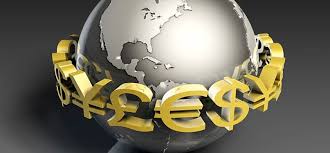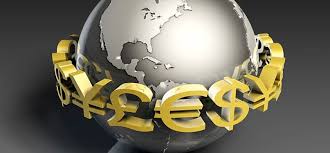
The Bank of International Settlements (BIS) noted a tilt away from London towards financial districts in Asia as volumes in global currency markets shrunk in the last three years.
The overall trading in foreign exchange markets averaged $5.1 trillion per day in April 2016, showed the latest survey by the Basel-based institution – known as the central bank of central banks. The BIS noted that in April 2013, "a month which had seen heightened activity in Japanese yen against the background of monetary policy developments at that time," this figure was $5.4 trillion.
Transactions fell to $1.7 trillion per day in April 2016 from $2.0 trillion in 2013 transactions at the daily spot foreign exchange market – where the underlying asset is traded rather than a derivative. According to the new Triennial Central Bank Survey report, this was the first fall since 2001.
From close to 41 percent three years ago, the U.K.'s share of the industry declined to 37.1 percent, it also noted. While China and Japan saw modest rises, the market in New York increased its share slightly.
The decline is "(more than) all due to a fall in EUR/USD, EUR.CHF, EUR/IPY and AUD/USD trading," Kit Juckes, global head of FX strategy at Societe Generale said regarding the global currency market.
"Ignoring the last of these we can put some of this down to the fact that the euro has been very subdued this year," he said.
However, he added: "Volumes have grown fast for almost all of my career and this represents the end of a golden age of growth in the market as regulation and scandals have tarnished the industry's reputation." As renminbi trading picks up, in particular, the center of gravity is "moving East", he explained. He added that Korean Won and Taiwan dollar volumes are up too.
Reaching $2.4 trillion per day in April 2016, the turnover of FX swaps rose further.
"This rise was driven in large part by increased trading of FX swaps involving yen," the report noted. For settlement on a set date (either immediately or soon thereafter) with regards to an agreement between two parties to buy one currency against selling another currency at an agreed price is referred to as a foreign exchange "spot transaction".
The BIS explains that a form of "risk-free collateralized borrowing/lending" is created by an FX "swap agreement" which is a contract in which one party borrows one currency from, and simultaneously lends another to, the second party.
Being on one side of 88 percent of all trades in April 2016¸the U.S. dollar remained the dominant vehicle currency, the latest survey, which sheds light on the size and structure of global foreign exchange (FX), showed. Market share was lost by the euro, yen and Australian dollar. Shares of many emerging market currencies increased in contrast.
The renminbi became the most actively traded emerging market currency, overtaking the Mexican peso and doubled its share, to 4 percent, to become the world's eighth most actively traded currency.
The survey reported national aggregates to the BIS, which then calculated global aggregates after they collects data from close to 1,300 banks and other dealers in their jurisdictions
(Source:www.cnbc.com)
The overall trading in foreign exchange markets averaged $5.1 trillion per day in April 2016, showed the latest survey by the Basel-based institution – known as the central bank of central banks. The BIS noted that in April 2013, "a month which had seen heightened activity in Japanese yen against the background of monetary policy developments at that time," this figure was $5.4 trillion.
Transactions fell to $1.7 trillion per day in April 2016 from $2.0 trillion in 2013 transactions at the daily spot foreign exchange market – where the underlying asset is traded rather than a derivative. According to the new Triennial Central Bank Survey report, this was the first fall since 2001.
From close to 41 percent three years ago, the U.K.'s share of the industry declined to 37.1 percent, it also noted. While China and Japan saw modest rises, the market in New York increased its share slightly.
The decline is "(more than) all due to a fall in EUR/USD, EUR.CHF, EUR/IPY and AUD/USD trading," Kit Juckes, global head of FX strategy at Societe Generale said regarding the global currency market.
"Ignoring the last of these we can put some of this down to the fact that the euro has been very subdued this year," he said.
However, he added: "Volumes have grown fast for almost all of my career and this represents the end of a golden age of growth in the market as regulation and scandals have tarnished the industry's reputation." As renminbi trading picks up, in particular, the center of gravity is "moving East", he explained. He added that Korean Won and Taiwan dollar volumes are up too.
Reaching $2.4 trillion per day in April 2016, the turnover of FX swaps rose further.
"This rise was driven in large part by increased trading of FX swaps involving yen," the report noted. For settlement on a set date (either immediately or soon thereafter) with regards to an agreement between two parties to buy one currency against selling another currency at an agreed price is referred to as a foreign exchange "spot transaction".
The BIS explains that a form of "risk-free collateralized borrowing/lending" is created by an FX "swap agreement" which is a contract in which one party borrows one currency from, and simultaneously lends another to, the second party.
Being on one side of 88 percent of all trades in April 2016¸the U.S. dollar remained the dominant vehicle currency, the latest survey, which sheds light on the size and structure of global foreign exchange (FX), showed. Market share was lost by the euro, yen and Australian dollar. Shares of many emerging market currencies increased in contrast.
The renminbi became the most actively traded emerging market currency, overtaking the Mexican peso and doubled its share, to 4 percent, to become the world's eighth most actively traded currency.
The survey reported national aggregates to the BIS, which then calculated global aggregates after they collects data from close to 1,300 banks and other dealers in their jurisdictions
(Source:www.cnbc.com)





